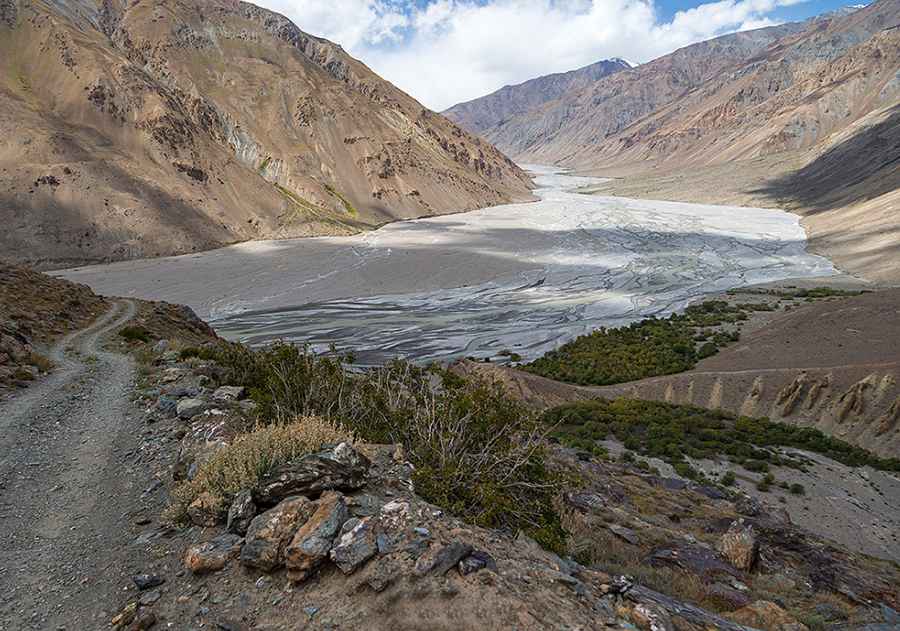Driving to Kok Jar Pass: A Road That Might Disappear Under Washouts
Kok Jar Pass is a high mountain pass at an elevation of 3,807m (12,490ft) above sea level, located in the Kūhistoni Badakhshon Autonomous Region of Tajikistan. The road may be impassable at times, even for 4×4 vehicles.

Where is Kok Jar Pass?
The pass, also known as Kok Jar, is located in the eastern part of the country within the Bartang Valley, one of the most remote and rugged areas in the already desolate Pamir Mountains.
Can I Drive to Kok Jar Pass?
Running through an indescribably rugged area, the unpaved road to the summit demands 100% concentration. The route is almost never fully passable by vehicles, as it is frequently washed away by floods and landslides. Large boulders block parts of the road, and some sections are completely washed out.
Is Kok Jar Pass Open in Winter?
Set high in the Pamir Mountains, heavy snowfall in winter can lead to landslides and avalanches. The road is impassable during the winter months and is generally not snow-free until late June, or even July in some years.
How Challenging is the Road to Kok Jar Pass?
The road through the pass, known as the Bartang Highway, can be impassable at times, even for 4×4 vehicles. The path is extremely narrow, with terrifyingly close canyon depths, and the uncertainty of what lies ahead can be exhausting. In some places, the road is hair-raisingly narrow, with deep escarpments looming nearby. This route is not suitable for regular cars.
Where Does the Road to Kok Jar Pass Start and End?
The pass connects the village of Ghudara, a decently sized village at the end of the Bartang Valley, with Shurali, a small town known for its geoglyphs—an ancient solar calendar made of large stones.
Road suggested by: Hugh Wilson
Pic: Nodir Tursun-Zade